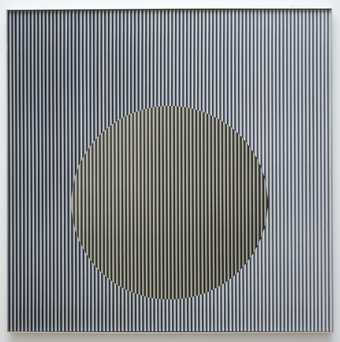Explore the geometric abstract art created by the New Tendencies movement in the 1960s
This room brings together artworks based on optical ('op') effects, geometry and movement made by a range of international artists linked to the New Tendencies network, founded in 1961 in Zagreb, Croatia.
In the 1960s, many artists in different parts of the world were methodically planning ways of making art. Taking ideas from mathematics, scientific research and colour theory, and sometimes using computers to create images, this came to be known as ‘programmed art’.
These artists saw the viewer not as a passive spectator but as an active participant, engaging with art in real time and space. Their works often trigger complex visual sensations, activated by the viewer’s perception of shape and colour. Sometimes this effect was intensified with the inclusion of moving (‘kinetic’) elements.
Reacting against ideas of individual genius and unique creative gestures associated with abstract expressionism and other artistic movements of the time, many used group identities. By making art that could easily be replicated, they hoped to stop artworks from becoming marketable luxury goods. All of the artists shown here participated in the New Tendencies exhibition series, held in Zagreb, then part of Yugoslavia, between 1961 and 1973.
This is one of a series of rooms at Tate Modern, each offering ‘a view from’ a different city. They focus on a period when new approaches to art-making emerged, developing locally and in dialogue with artists from other parts of the world.

